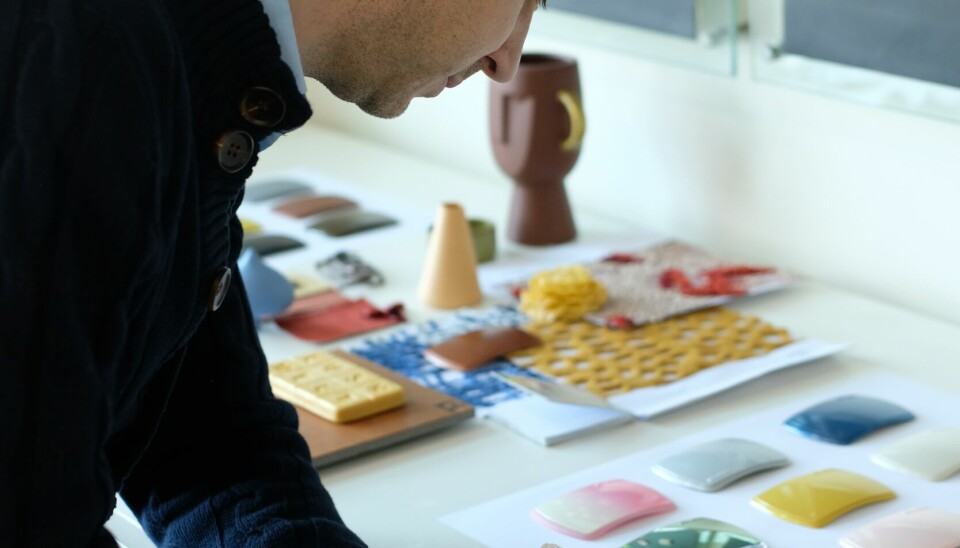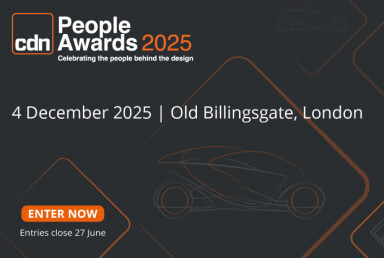Paint supplier
The evolution of paint technology

Gareth Bryant, global colour and design lead at AkzoNobel, gives his take on automotive colour trends
As with most fields in the automotive industry, suppliers have a huge role to play in shaping the look and feel of new cars — quite literally.
This is well known (and widely discussed) when it comes to materials for interiors but far less so with respect to the exterior. Perhaps that should change. As part of our monthly focus, we decided to explore the process behind creating a paint that can be replicated across hundreds of thousands of vehicles each year.

AkzoNobel is one of the world's foremost paint suppliers to a range of sectors, and seemed a strong starting point. Car Design News caught up with global colour and design lead Gareth Bryant to learn more about the Automotive & Specialty Coatings arm of the business, and the role of paint suppliers more broadly.
Car Design News: How has “typical” automotive paint developed as a product over the years?
Gareth Bryant: Over the past two decades, automotive paint has shifted from being a simple aesthetic colour with a protective aspect, to an advanced functional coating solution. Special effects like chroma-shifting pigments, ultra-fine metallic flakes, and structural colours have emerged.
Matte finishes and satin clears have also become fashionable, despite being harder to maintain. Advanced smart coatings now feature improved scratch resistance, and easy-to-clean properties, clearcoats that are self-healing, and heat-reflective pigments which help keep car interiors cool.
To reduce the environmental impact of automobile manufacturing AkzoNobel has made substantial progress with VOC reduction, bio-based resin systems, and C02 reduction initiatives. Digital technology has also transformed the way consumers experience colour, with virtual and digital paint previews now available before.
CDN: Are there certain things you can do for special editions or show cars where typical constraints are not an issue?
GB: Absolutely, when designing a one-off project like a concept car, we can break free from the normal constraints of cost, durability, mass production feasibility and repairability. This opens the door for wildly creative, technically impractical, but visually stunning finishes.
Some examples include extreme colour effects such as multi-layer “liquid metal” finishes, adaptive colour coatings, and fluorescent effects. This freedom allows us to push the boundaries of innovation in the real world too.

CDN: What kind of involvement do you have with car designers, or those closely associated with car design, during any stage of the process?
GB: We work closely with OEM and CMF design teams to help them select the perfect finish for their projects. Our role is to offer inspiration and assist in selecting the ideal colour by providing guidance through CMF trends and starting points for new developments. We also offer specialised tools, such as ColourSurfaces Trend Editions, a guide that highlights the latest colours and finishes tailored to the automotive OEM market, helping partners and customers stay current and competitive.
CDN: How significant is the “finish” compared to the colour itself? Can a different finish dramatically alter the actual pigment of the paint?

GB: The shift in colour preferences has gone hand in hand with advances in technology, and the growing demand for functionality in design.
Today’s coatings, whether they are matt, metallic or gloss, are much more than just visually appealing, they’re high-performance. They enhance durability, promote sustainability, and can incorporate advanced features like UV protection and self-cleaning properties. These developments have influenced the aesthetic and practical application of coatings across all industries, aligning design trends with the changing demands of technology.
CDN: Are you always looking out for the next new colour trend, or do you try to avoid going with "whatever is hot right now”?
GB: Over the past 20 years, we’ve seen a dramatic shift from the dominance of bright, artificial tones to a more natural, organic colour palette, a testament to how deeply consumer preferences have evolved.
There is now a growing demand for vehicle personalisation and unique paint finishes such as matte, metallic, and pearlescent options. This demand is driving innovation in paint formulations and application techniques, offering more diverse and customisable choices for vehicle owners.
Innovation and technology will play a central role, with advances in AI, deep learning and other technologies driving changes in the colour industry. The demand for personalisation, a deeper understanding of cultural contexts, and a focus on sustainability will continue to influence design choices, particularly in the automotive and consumer electronics industries, where colour can evoke strong emotional responses and influence purchasing decisions.
Sustainability will also be a significant driver of trends, influencing material choices and production processes. As stricter environmental and safety regulations come into play, AkzoNobel is at the forefront of developing coatings that exceed these new standards.

CDN: How does colour impact a driver or potential buyer's perception of the car, and overall mood?
GB: Colour plays a significant role in how a driver perceives their vehicle, often tied to personal expression. Bright, warm colours like red, orange and yellow can lift the mood, adding a fun and youthful energy to the driving experience. These colours are often associated in people’s minds with performance and speed.
On the other hand, cooler tones like blue and soft greens tend to evoke feelings of relaxation, calm, and comfort, making them especially pleasant for longer commutes.
CDN: Are there any misconceptions around automotive paint?
GB: One myth I often hear is that ‘red cars cost more to insure.’ I’m not sure how globally widespread it is, but it is certainly a misconception. Insurance rates are determined based on driver profile, vehicle type and accident statistics, and not the colour of the paint.
The myth likely started because sports cars were more likely to be in bright colours such as red, and so people assumed insurers linked it to riskier drivers.







